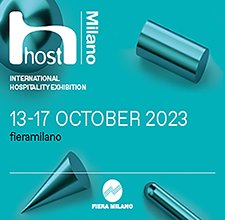Out-of-home eating ends the year on a positive note thanks to tourism, but customers, who still want to eat out, are changing their habits and will need to be both pampered and monitored.
Hospitality has taken off again and is recording better-than-expected results, thanks in particular to a sensational summer driven by the return of tourists. There is much comfort to be drawn from the fact that people clearly still want to eat out: the out-of-home eating sector is something consumers will not be abandoning any time soon. We are, however, likely to see some changes in who is eating where and that will require a certain degree of flexibility on the part of operators, who will have to be attentive to new needs as they constantly monitor their own costs, and customer trends. Digitisation and new data analysis technologies will come in very useful here.

According to TradeLab, Italy’s out-of-home eating sector will close 2022 at approximately 82 billion euros: not quite the level of 2019, when an exceptional result of 85 billion euros was recorded, but quite close. And it is certainly way up on the 2020 result of just 54 billion euros and 2021’s 65 billion euros.
Iri-Npd estimates a growth in 2022 of approximately 30.8 percentage points on 2021, of which 21.9 came through increases in volumes and 8.9% from inflation. The year now drawing to a close introduced an important new element: the price factor, which will need to be taken into account (quite literally) in 2023.
So it is a question of playing things by ear, monitoring the situation at home and abroad and adapting to new consumer needs, i.e. the fact that people will be going out less but will still be going out. And when they do go out they will expect an emotional experience.
In this sense, the foodservice chains seem to be well positioned: they have always been able to count on a managerial approach, on the swift uptake of new technologies and on economies of scale. They are indeed on the increase now in a country like Italy that has always been resistant to change. Between 2019 and 2021 they grew from 7% to 10% of the total out-of-home eating sector, says TradeLab, with 10,000 outlets shared by 700 brands.
That is still quite a low figure, but it should be remembered that its typical clientele is in the 18-24 age range: and as this target gets older it will continue in its habits, which will in turn make things more difficult for traditional outlets reluctant to change with the times.
To find out more about what the future of out-of-home eating holds, the place to be, in person, is fieramilano Rho, from 13 to 17 October 2023, as well as at all its @hostmilano channels, in order to be sure of keeping up to date with all the latest trends.

